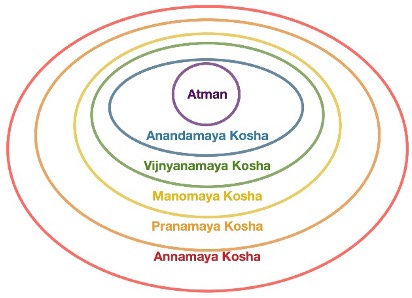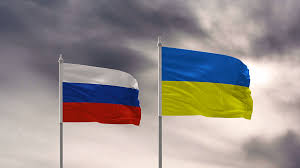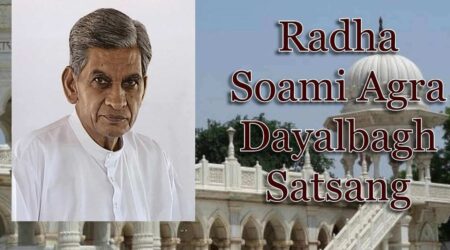Indian understanding of Dharma is different from Religion of the West
By Bal Ram Singh
Spirituality is in the vogue these days, if not for its own sake, then it being an escape from other terms that tends to define humans from time to time. When people are tired of material pursuits, they tend to galvanize towards the spiritual domain.
When people become old, done with family and social responsibilities, they tend to move towards spirituality and God. Also, when religious practices and doctrines become untenable in the light of science and intellectual examination, people at any age, young and old, tend to become spiritual.
And, finally, even those who have examined life through intellectual and philosophical pursuits without much clarity, they tend to start following a spiritual path for their own peace of mind.
What exactly is Spirituality
The word is derived from spirit, which comes from the Latin word, spīritus (breath; spirit), from Proto-Indo-European, “to blow, breathe”. In other words, the spirit is the basis of life, something equivalent to Prana in the Sanskrit or Ayuredic language. Spirit is also taken as the soul or even a ghost in religious terms. There is a concept of “Holy Ghost” in Abrahamic religions of the trinity tradition of the Father, the Son, and the Holy Ghost.
In India, Dharma is considered to contain some of the religious concepts, but it has a broader view of human nature. According to sage Kaṇāda, who provided the idea of the atom around 700 BC, Dharma is that which governs the birth or begin to rise and ultimate accomplishment i.e. death of everything.
Yato’bhyudayaniḥśreyasasiddhiḥ sa dharmaḥ
(Vaiśeṣika Sūtra 1.2)
This is not just a secular definition of Dharma, but a scientific one. It incorporates all those forces that govern appearance and disappearance of material and non-material things in this universe. When the meaning of Dharma is appropriately understood, one has no choice but to turn to the nature to experiment and acquire the true meaning of Dharma.
This is a legacy of India or Hindus that must be understood even by those who call themselves Hindus, Buddhists, Jains, and Sikhs (the followers of the Dharmic traditions) and also by those who want to know more about dharmic traditions, because the fundamentals of these thoughts and traditions derive from such an understanding of Dharma. India’s fundamental principles moored in Dharma remain eternal, the basic foundations of its traditions strong, and essence of its practices fairly universal.
Reducing Dharma to the concept of religion, a concept developed in the Western world and Middle East over two thousand years ago, does not serve the society well today. Religion is limited to organization of society around spiritual life, and becomes very rigid, and most of the time unquestionable. In contrast, dharma is multitudinal which allows questioning, even opposing the values proposed, testing them by individuals rather than organized groups, and requires objectivity by suggesting freedom from kāma (desire), krodha (anger), lobha (greed), moha (infatuation), mada (pride), and matsara (ego). These features allow the basic scientific approach of systematic analysis, non-falsifiability, and objectivity.
A list of common and contrasting features of Dharma vs. Religion are given below:

At some point, spirituality referred to the Spirit or soul in Christianity, which considers Spirit to be the force behind the soul. From Indian philosophical perspective the Atma as in Jivatma is the manifestation of Parmatma, which is not needed to be created or destroyed, as it is an extension of Pramatama or the Brahm, thus comes the Vedic ideas of Aham Brahmashmi (I am the Brahm) and Ekoaham Bahushyami (I am the one manifested in many ways). In this way, Atma is similar to the Soul, except it not being created rather being manifested. And, Spirit, may in fact refer to the Prana, the power or the energy that runs universe, including human body.
I had once an opportunity to ask this question to the Shankaracharya of Jagannath Puri, who said that the source of Prana is Atma, and by derivation Parmatma. Thus, spirituality, in fact, refers to Adhyatmic in Indian traditions. There is an entire philosophical framework created whereby Atma and body are interconnected to Karma via the Yoga Chakras of the Yoga philosophy.

One of the most amenable vehicle currently available in the world in the acceptance of Yoga philosophy and practice. The basic concept propounded in Bhagvadgita is “Yogah kamashu kaushalam”, is important concept that can be linked to the practice of Yoga to demonstrate the practice of karma theory. Patanajali Yogsutra brings out the definition of Kriyayoga or the Yoga of action, and also the concept of Ishvara which is a state of mind that lends one to be untouched by the karmaphala. In other words, the concept of karma can be readily explained in the practice of Yoga, which will also allow people to realize the state of Ishvara.
The consequences of kriya or karma lead to evolution of one’s true self into realization of oneself into Ishvara through development of shama (control of mind), dama (control of senses), uparati (following one’s own essential nature), titikhsa (practicing endurance), shraddha (steadfastness on the sacred path with devotion and love), and samadhan (liberation from doubts and desires) which can be attained by activating the six chakras (mooladhar, swadhisthan, manipur, anahat, vishudhi, and ajna) through yoga.
There is an idea of the “panchkosha system” whereby humans have their existence from annamaya (physical, inorganic minerals), pranmaya (energy or air, plants as examples), manomaya (mind, animals), and gyanmaya (intellect, humans) koshas (sheaths), and can evolve further into anandmaya (bliss or angelic, devas) kosha.
The acceptance of the physical nature of human being, in addition to the pranmaya kosha, manomay kosha, and gyanmay kosha, allows us to look into scientific observations with sympathy, and provide further ideas to advance or evolve the physical nature to higher levels of human existence.

Furthermore, the concept of physical and subtle bodies – ethereal, astral, mental, and spiritual, along with the concept of chakras and nadi (energy channels) allows to explain the operational aspects of reincarnation. The chakra system allows experiential observation through yoga practice making it a real-world observation. Karma can be performed at any level of the physical or subtle bodies, and those get cross-crypted in other bodies through the junctions of the chakras where all the bodies cross each other.
With such intricate details of theoretical frameworks of Indian philosophy that provides many practical avenues of practice spirituality, both in terms of Yoga and Ayurveda (linking minerals, plants, and animals to angelic or deva state through human knowledge, in the Panchakosha system) practices and their examination through scientific lens of today, the Indian spirituality in 2023 is well on its way to lead the society all over the world, provided Indians play their crucial role!

Balram Singh is a Professor and the President of the Institute of Advanced Sciences, Dartmouth, Massachusetts, researching on Ayurveda, Yoga, Vedic education, and Vedic social and political traditions. He is also adjunct faculty at Jawaharlal Nehru University (JNU), New Delhi.
Disclaimer: The views expressed are not necessarily those of The South Asian Times











